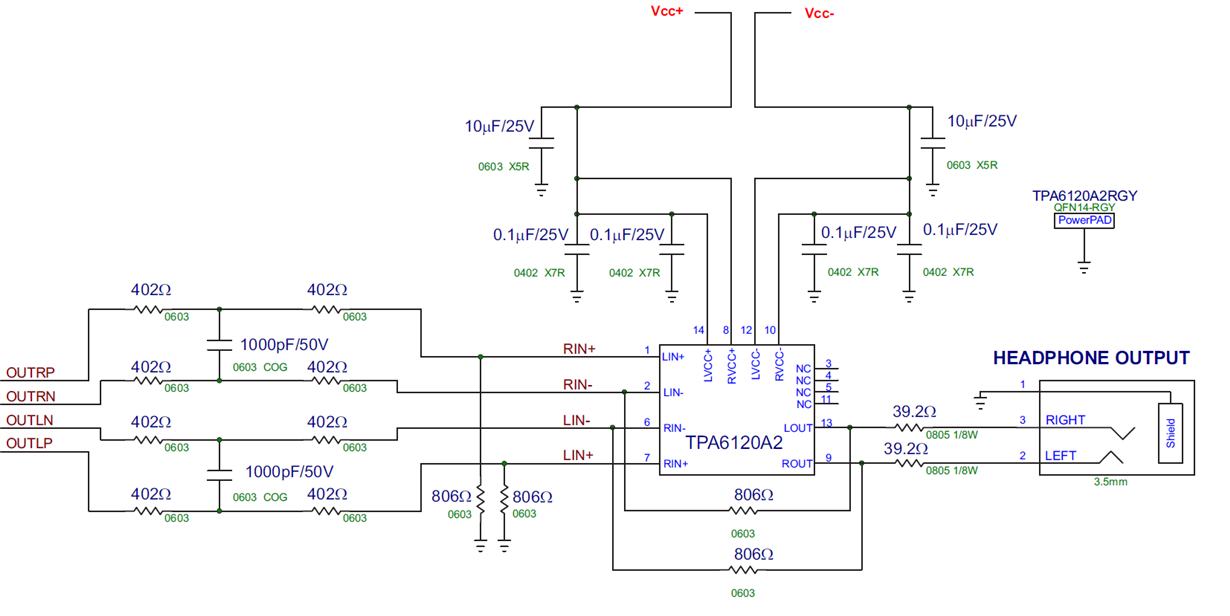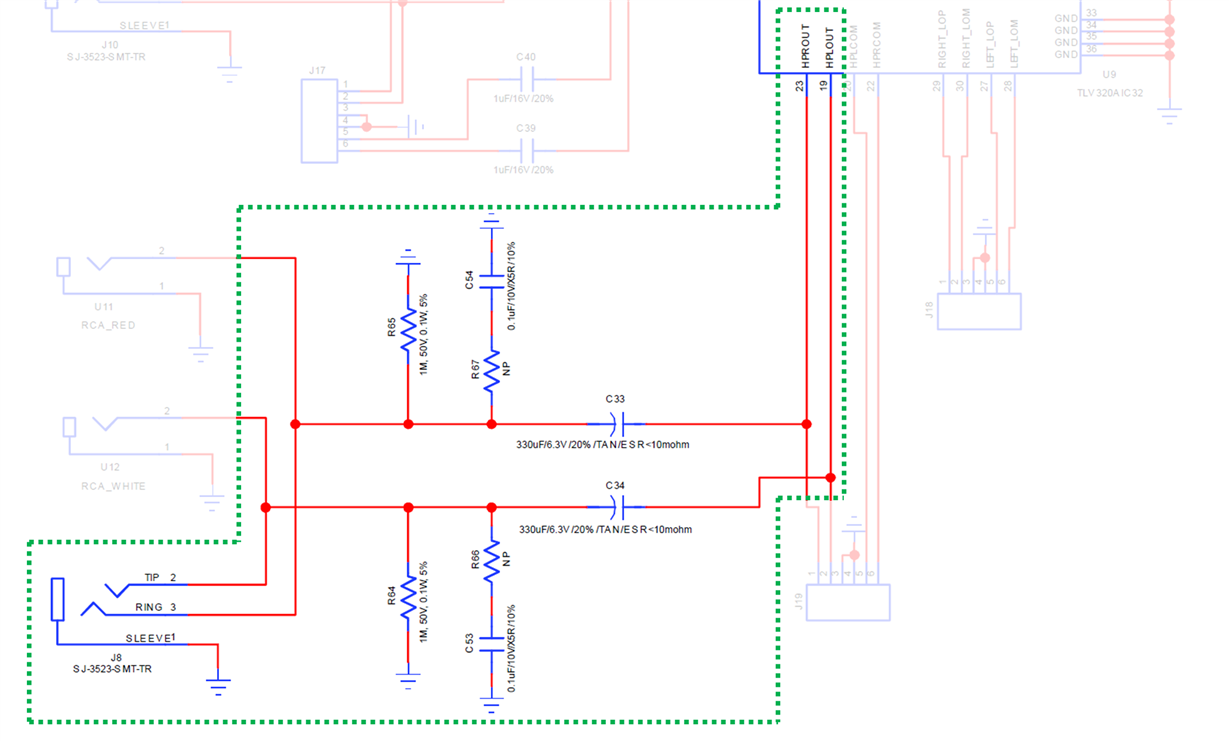I am using the headphone amplifier (TPA6120A2) and it is not very loud, possibly because of my implementation and lack of understanding.
I need to drive a pair of headphone speakers which will be used in a noisy environment, so they need to be louder than average.
Typical headphone amplifiers used in audio MP3 players and smartphones are not powerful enough, so I chose to use the TPA6120A2 hoping it would be louder, but it is no louder than the amplifier used in an iPhone/iPod.
I am using differential line outputs from a CODEC (TLV320AIC32IRHBT) as the audio source for the headphone amplifier (TPA6120A2).
The headphone power amplifier is powered using a DC-DC converter (TPS65136), which provides a +/-5V supply. This is the same as figure 19 in the TPA6120A2 datasheet.
The DC-DC converter (TPS65136) is powered from a 3.7V, 850mAh lithium polymer battery.
The headphone power amplifier drives a pair of helmet speakers (TORK XPRO helmet speakers) which have the following specs:
- Frequency range 20-22,000 hz at 106db/1KHz
- Max 500mW
- 32ohm
See...
http://www.torkworld.com/helmet-speakers/xpro-helmet-speaker.html
Some things I am unsure about are:
- Is the lithium polymer battery suitable ?
- Do I need a more powerful battery ?
- Is the +/-5V supply to the power amplifier suitable ?
- Do I need a higher voltage split rail supply ?
- The TPA6120A2 datasheet shows an example using a PCM5242RHB CODEC which has 4.2VRMS, ground-centered differential outputs.
- From my understanding, the TLV320AIC32IRHBT datasheet specification states that the differential outputs are 0.707VRMS, 1.35V centered (is this correct ?)
- The manufacturer (TORK) states that these headphones "can plug into all popular music devices such as MP3, iPOD, Galaxy and iPhone". The speakers weren't very loud when I tried them with my iPod, I am assuming its because the amplifier in the iPod isn't driving the speakers to their full potential ?



